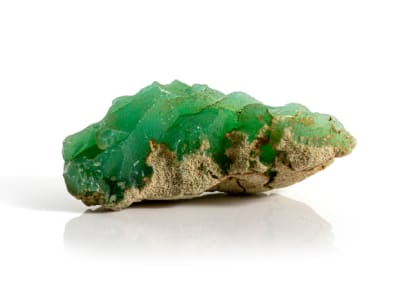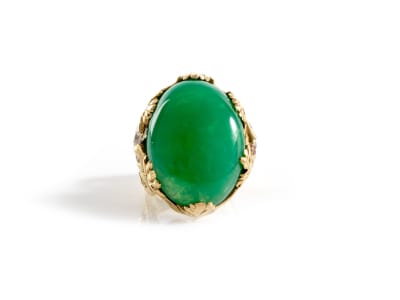One of the most coveted varieties of chalcedony quartz, chrysoprase is prized for its apple green color and rarity. Chrysoprase's name comes from the Greek words chrysos meaning “gold,” and prason meaning “leek,” due to its color similarities with the vegetable. The color is natural and due to nickel. The color may fade if the material is exposed to heat or sunlight and might be restored if stored in water. If the chrysoprase is found within brown or white matrix it is called chrysoprase matrix.
General Information
LWUV: Inert
Chrysoprase Colors
-
 Green
Green
Countries of Origin
Tanzania, United Republic Of; Myanmar; Argentina; Russian Federation; Japan; United States of America; Madagascar; Kazakhstan; Portugal; India; Spain; Unknown; China; Brazil; Poland; Australia; Peru; Germany; Greenland
Care
Normal Care, stones may fade if exposed to heat or sunlight.


